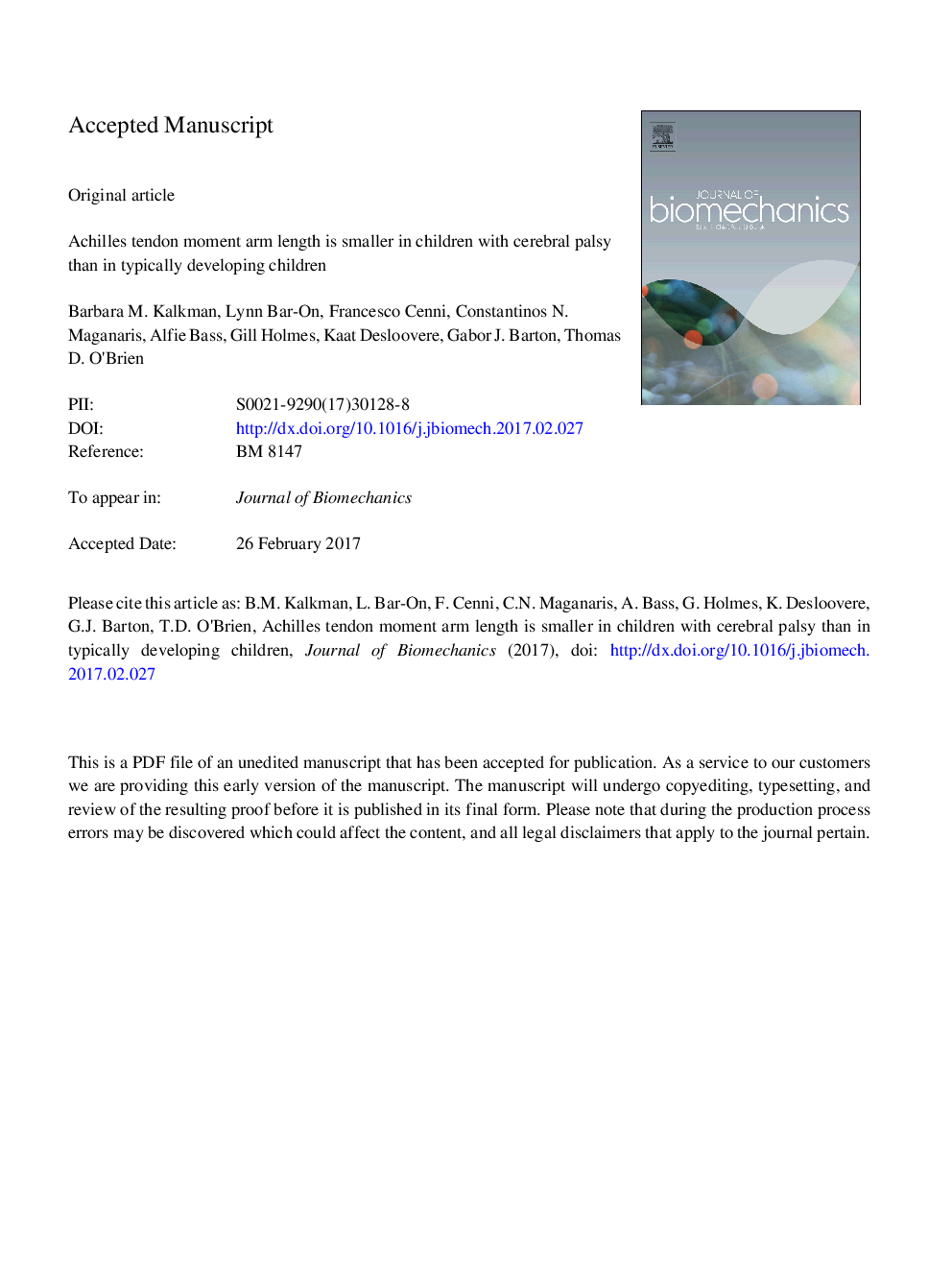| کد مقاله | کد نشریه | سال انتشار | مقاله انگلیسی | نسخه تمام متن |
|---|---|---|---|---|
| 5032056 | 1471108 | 2017 | 28 صفحه PDF | دانلود رایگان |
عنوان انگلیسی مقاله ISI
Achilles tendon moment arm length is smaller in children with cerebral palsy than in typically developing children
ترجمه فارسی عنوان
طول بازو تاندون آشیل در کودکان مبتلا به فلج مغزی کوچکتر از کودکان معمولی است
دانلود مقاله + سفارش ترجمه
دانلود مقاله ISI انگلیسی
رایگان برای ایرانیان
کلمات کلیدی
اختلال در بازو آنتروپومتری، بازوی لحاف تاندون آشیل، مزیت مکانیکی، قدرت عضلانی،
موضوعات مرتبط
مهندسی و علوم پایه
سایر رشته های مهندسی
مهندسی پزشکی
چکیده انگلیسی
When studying muscle and whole-body function in children with cerebral palsy (CP), knowledge about both internal and external moment arms is essential since they determine the mechanical advantage of a muscle over an external force. Here we asked if Achilles tendon moment arm (MAAT) length is different in children with CP and age-matched typically developing (TD) children, and if MAAT can be predicted from anthropometric measurements. Sixteen children with CP (age: 10y 7 m ± 3y, 7 hemiplegia, 12 diplegia, GMFCS level: I (11) and II (8)) and twenty TD children (age: 10y 6 m ± 3y) participated in this case-control study. MAAT was calculated at 20° plantarflexion by differentiating calcaneus displacement with respect to ankle angle. Seven anthropometric variables were measured and related to MAAT. We found normalized MAAT to be 15% (â¼7 mm) smaller in children with CP compared to TD children (p = 0.003). MAAT could be predicted by all anthropometric measurements with tibia length explaining 79% and 72% of variance in children with CP and TD children, respectively. Our findings have important implications for clinical decision making since MAAT influences the mechanical advantage about the ankle, which contributes to movement function and is manipulated surgically.
ناشر
Database: Elsevier - ScienceDirect (ساینس دایرکت)
Journal: Journal of Biomechanics - Volume 56, 3 May 2017, Pages 48-54
Journal: Journal of Biomechanics - Volume 56, 3 May 2017, Pages 48-54
نویسندگان
Barbara M. Kalkman, Lynn Bar-On, Francesco Cenni, Constantinos N. Maganaris, Alfie Bass, Gill Holmes, Kaat Desloovere, Gabor J. Barton, Thomas D. O'Brien,
